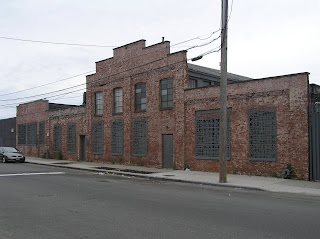A liberal society
In 2025, the conventional wisdom of liberal America is that we as a society need to have empathy for others not like us, fight discrimination, achieve equality and justice for vulnerable minorities, level the playing field, and represent the rich diversity of our country in the workplace, media, and elsewhere. This is good news and represents the evolution of a compassionate and interconnected society.
Even many conservatives agree with the principles above, with exceptions starting to appear as you get into the specific culture wars of the moment.
So mainstream American society has, at least publicly, become more tolerant, compassionate, and sensitive to discrimination and inequality. This is true progress from the days of overt racism and hate going unchecked, despite the perception by some that nothing has changed. I'm not a social scientist and don't have statistics in front of me, but I would venture that most most metrics on overt racism, homophobia, and discrimination are down. Yes there is much work to do, but the notion that it's no better today than 1965 or 1920 or 1885 is nonsense.
So what's the problem?
The mindset of those on the frontlines of liberal activism today -- progressives -- has grown increasingly brittle and supportive of a zero sum mode of politics. That is to say that the Left has become a bastion of culture warriors combating the culture warriors of the Right, each side channeling morality itself in order to save humanity. Infused with such purpose, culture warriors have calcified their views into cult-like ideologies that are immune to logic, dialogue, nuance, and compromise. For the progressive standard bearers, there is simply good and bad, black and white, woke and conservative, oppressor and victim. They respond to each new outrage enthusiastically, driving the two sides further and further apart (just as their MAGA counterparts do).
To be clear, I am a lifelong liberal Democrat. I share many of the values of the Left and am equally disgusted by the overreaches of Trump and the Right. But today's progressives have become a caricature: self-righteous, small-minded, and easily offended enforcers of language and thought that might differ from their worldview. While they do not currently hold political power, they hold sway over many of our cultural institutions (media, entertainment, academia, education, unions, etc.), which have gradually radicalized their staffs in order to virtue signal and remain relevant in industries dominated by guilt-ridden, privileged whites. The influence of today's Left, through these institutions, is just as dangerous to our society as Trump's nihilist dismantling of our democracy.
Why is it dangerous?
Because, when a group believes -- absolutely -- that it is on the side of truth and justice, its facts become indisputable and its adherents have no interest in subtlety or alternate views. They are crusaders for justice; and those who stand in the way of progress are bullied publicly and risk losing their jobs, reputations, and social standing.
What's the result?
- A conversation about immigration that is utterly unnuanced and alienates millions of non-racist Americans (including immigrants) who would like sensible immigration reform
- Smart people who assert that we aren't allowed to discuss transgender science or mental health because even having the conservation would be akin to violence against a vulnerable group
- A culture that shames people for not using correct pronouns
- Reducing all Americans to their intersectional categories -- from persecuted, always blameless victims on one side to privileged oppressors on the other, no matter the actual facts on the ground for each individual or group
- Alienating tens of millions of potential allies (and voters) who don't accept the categories or fit into the narrow identities provided (including large numbers of working class whites, Asian-Americans, Latinos, Blacks, Jews, LGBT+ and others)
- People who abhor discrimination of any kind who nevertheless justify rampant discrimination against Jews, who are cast -- as they've been for centuries -- as fair targets for society's hatreds because of their otherness or relative success (the current false flag argument is "we don't hate Jews, we hate Zionists," a category that represents the majority of the world's Jews, who believe in Israel's right to exist)
- The imposition of a binary, black and white worldview onto other countries, regardless of their realities or unique histories (with the current, hugely disproportionate obsession being Israel)
I will never become a reactionary conservative, but the progressives have ceded any moral high ground and will never capture the majority of the American body politic. The result will be the ongoing splintering of the Democratic party, allowing MAGA assholes to continue to be the electable alternative.













